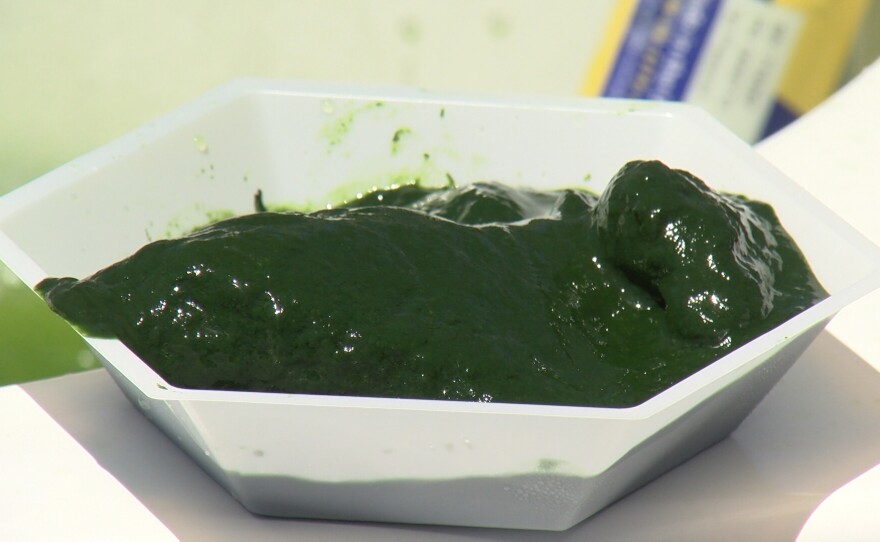It’s the world’s most popular shoe. Unfortunately, far too many flip-flops end up in the ocean, on beaches and in landfills. But faculty and student researchers at UC San Diego have come up with a solution.
“We began with a surfboard.”
Standing in a greenhouse on the UC San Diego campus, chemistry professor Michael Burkart recalled how he and his students got to where they are today.
The journey began in 2008 when he and his students started making gasoline from algae. But once it became clear big oil wasn’t about to tolerate fuel from algae replacing fossil fuels, they went in a different direction.
They started making polyurethanes from algae. That led to the surfboard, and once word got out about that, Burkart said the phone started ringing.

“From just about anybody that uses polyurethanes, from shoe companies to companies that make yoga mats to companies that make pool noodles and they all asked us, 'can you make renewable polyurethanes,' and we said 'yes,'" Burkart said.
The process of turning algae into renewable polyurethanes starts with making cultures in a lab. Then they’re brought out to the greenhouses where the algae is grown in things called "raceway ponds" — so named because they're shaped like oval raceways.
“We’ll grow these up until they get nice and dense, at which point then we will separate the algae from the water,” Burkart said.
That yields a green goop that has the consistency of yogurt.
The process then moves back to the lab where a lot of very scientific mixing and measuring goes on until what was green goop is transformed into polyurethanes.
The whole idea is to move away from plastics made from fossil fuels that can take up to 1,000 years to decompose.
RELATED: Plastic Wars: Industry Spent Millions Selling Recycling — To Sell More Plastic
“We really only want to be making materials that have the ability to decompose and/or can be recycled," Burkart said.
After all the algae cultivation and all the work done in the lab, the polyurethane mixture is poured into a mold, the sole for a flip-flop. But not just any flip-flop. These are environmentally friendly flip-flops.
Unlike regular flip-flops, made from fossil fuel-based polyurethanes, these flip-flops, depending on where they're discarded, can completely degrade in just 16-weeks.
The scientists working on the project have formed a company that’s working with a local manufacturer to bring the flip-flops to market. That should happen sometime next year. Think of it as one small step to help rid the earth of non-biodegradable plastic, or call it a giant stride toward saving the planet.






